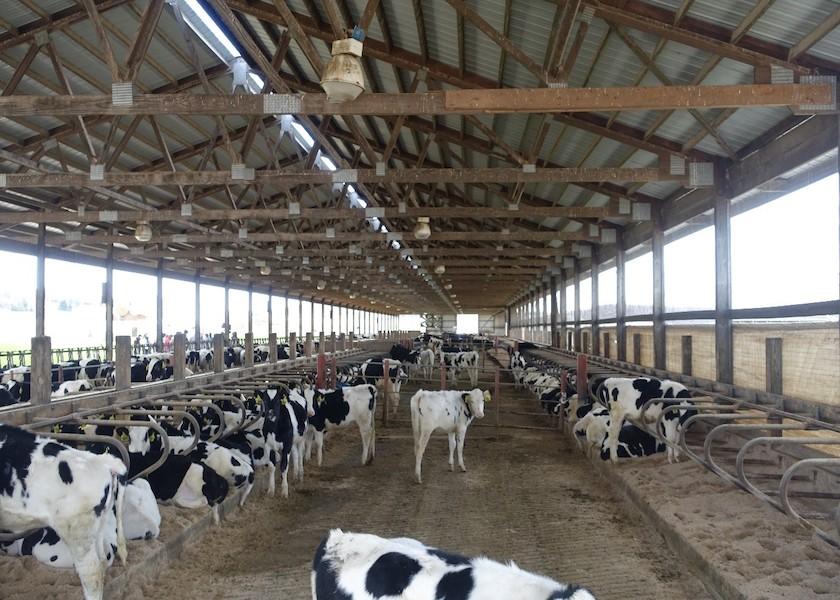Efforts to Help Heifers Love Freestalls

Freestalls are unfamiliar to young heifers when they’re first turned into them. If bad habits -- like lying in the alleys or backwards in stalls – start early in life, they can result in adult cows who also use stalls improperly.
Are there ways to help make that transition easier?
Researchers at the University of British Columbia and University of Wisconsin teamed up to evaluate some possible options to help acclimate heifers to freestalls more quickly, and get them to use them correctly.
In two previous studies, researcher Marina von Keyserlingk found that heifer lying time decrease by 3-4 hours per day when young heifers were first moved from a bedded pack to freestalls. The objective of the current study, published recently in the Journal of Dairy Science, was to potentially identify ways to shave time off of that adjustment period so heifers could settle in and rest more quickly and correctly in their new freestall environment.
The two methods evaluated were:
1. Experiment #1: Using an older, experienced heifer as a “social model” to demonstrate correct freestall use when they entered the new environment -- 44 heifers were assigned in pairs into either a control pen with no older, “pilot” heifer, or the social group, in which an experienced heifer a few months older greeted them.
2. Experiment #2: Mounting stationary brushes in the stalls to attract heifers into them -- 52 heifers were assigned in pairs to an area with either control stalls (no brushes), or stalls equipped with grooming brushes.
Both experiments were conducted with inexperienced heifers, approximately 4-5 months of age, that were moved from a bedded pack to the various sand-bedded freestall pens in the same barn.
In both experiments, heifers were observed every 5 minutes for lying behavior two days before they entered the freestall areas (Day -2); Day 0 (the day they entered); and Day 4 after they were introduced to freestalls. These metrics included time spent standing; time spent “perching” with front feet in the stalls; whether lying took place in bedded areas versus alleys; and the direction they laid in the stalls on Days 0 and 4.
The length of time it took for heifers to first lie down in a stall also was recorded continuously.
Ultimately, the researchers observed no significant difference in lying behaviors within treatment groups.
The only significant result at all was that all animals in Experiment #1 (control and with the “social model” heifer) initially laid down in the freestalls more quickly, by nearly ten-fold, than the heifers in both components of Experiment #2. On average, Experiment #1 heifers laid down after 3.8 hours of entering the freestall pens, while heifers in Experiment #2 took an average of 31.4 hours to lie down for the first time after freestall introduction.
In the end, the one, significant factor that eventually led to correct stall use was time. By Day 4 after freestall introduction, both lying and standing in all four experiment sub-groups returned to baseline behavioral levels observed on Day -2, before moving from the bedded pack. Perching behavior remained higher at the end of both experiments, however.
Also by Day 4, the number of heifers exhibiting only desirable lying behavior increased, from fewer than one-third, to more than half on Day 0 versus Day 4. However, the undesirable behaviors of lying in the alley and lying backward in the stall persisted for a few animals across treatment groups at the end of the study.
The researchers concluded that there may have been too many other novel distractions upon entering freestall pens – new bedding, feed (in Experiment #2), feed barrier, and stall hardware – which left heifers overwhelmed and less able to respond to the experimental efforts to encourage stall use via social models or grooming brushes.
Thus, it appears the quest to discover ways to quickly acclimate heifers to freestalls continues.







